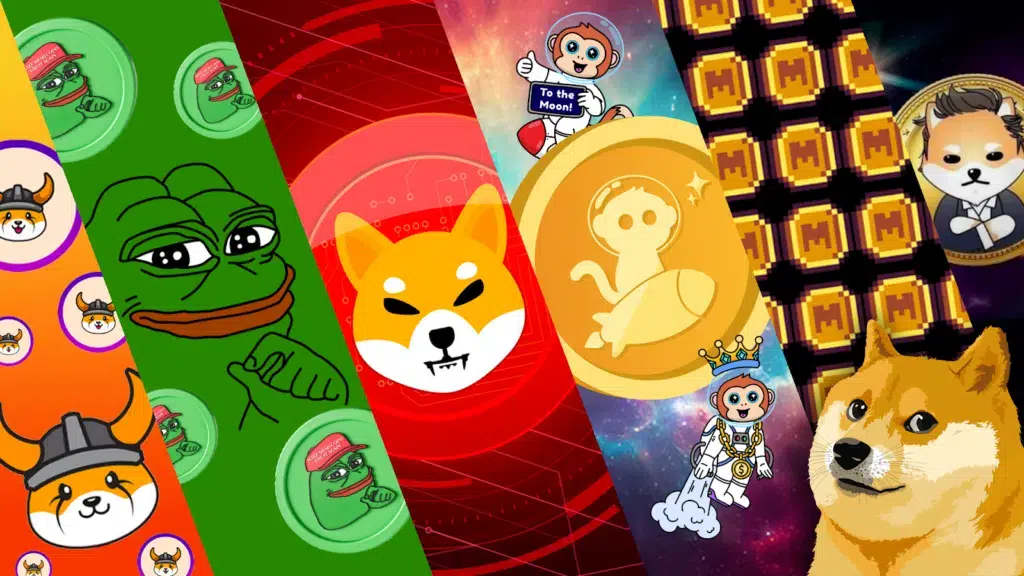Meme culture is a major phenomenon that has played a key role in the adoption of cryptocurrencies over the last decade. In fact, the advent of meme culture and the adoption of cryptocurrencies have been happening in parallel.
At the time of writing, there are over 300 memecoins in existence, with a total market cap of $41.3 billion according to Coingecko.
While this may seem like a drop in the ocean compared to the larger cryptocurrency market ($2.1 trillion), it is interesting to observe that memecoins have stood the test of time despite criticism since Dogecoin’s debut in 2013 until today.
So, how powerful is meme culture in the cryptocurrency industry? Before we get into the details, it’s worth pointing out that memecoins have been around for over a decade; DOGE was the pioneer and was designed as a parody of Bitcoin. The idea was to introduce a playful aspect to the digital asset industry.
Today, we have all sorts of memecoins: DOG, CAT, electoral tokens and many others. But what is even more important to note is the organic growth of huge communities around some of these memecoins, including PEPE, WIF, Shiba Inu and of course the Elon Musk “endorsed coins” such as DOGE and LADY.
How big is meme culture?
To understand the influence of meme culture in the cryptocurrency space, the most recent example would be the growth of the Solana ecosystem since the beginning of 2024. DeFi Llama metrics show that the total value locked (TVL) has increased from $1.4 billion to $4.8 billion at the time of writing. Even more intriguing, the number of active wallets in the last 24 hours stands at 3.2 million, compared to 349,000 for Ethereum.
Every other day, memecoins are probably launched on Solana. Most of these projects are based on specific niche concepts that might appeal to a certain category of people, whether it’s dog or cat lovers or election fan tokens. This culture and the appeal of an organic community for purely funny or viral jokes has seen a memecoin like WIF soar over 100,000% in the space of nine months.
Another interesting angle to look at the power of memecoin culture would be its appeal to high-profile figures like Elon, and the impact these individuals or KOLs have on the overall crypto ecosystem.
To put things into context, Elon Musk is one of Dogecoin’s biggest fans, ever since the DeFi summer of 2020 and 2021, when he made tweeting about DOGE his hobby. At one point, he even hinted that DOGE would be the official currency on Mars if humanity ever made it there in the future.
It’s clear that the “endorsement” by influential voices has amplified the importance of memecoins in the broader financial ecosystem, attracting more users and capital into the digital asset space. When Elon Musk tweets about DOGE, it’s not just degenerates who take notice or throw in a few coins, some mainstream entities are now using the same tweets as a signal for their memecoin investment strategy.
This fan-based culture has also proven to be a factor in price movement, with notable examples such as the memecoin LADYs which soared by around 11,000% in May 2023, thanks to Elon’s “There is no meme, I love you” photo tweet which triggered a large number of bids on the token.
Beyond the Degenerates: Adoption in the Real World
Meme culture is pushing the boundaries of fun towards more real-world use cases. What started as a joke with the prospects of integrating DOGE as a payment method is now a reality with some Tesla products. The popular electric vehicle manufacturer recently added DOGE as an alternative form of payment, sparking discussions about what memecoins can become. Can this crypto sub-asset find its place in everyday payments?
It may be a little early to make conclusive comments on the underlying potential, but it is clear that as long as a certain ‘community’ agrees that a memecoin holds some defined value, it could also be used as a form of currency.
And with on-chain lending now in sight, memecoin investors are no longer limited to holding their digital assets for purely speculative purposes. There are crypto platforms such as Youholder that allow those holding a memecoin like PEPE to use their assets as collateral to access loans denominated in USD, EUR, and CHF with a 90% LTV.
Conclusion
Memecoin culture reveals a deeper reality of the modern financial ecosystem: fun is becoming more important than fundamentals. Investors are no longer limited to value-driven products, but rather to projects that have a playful aspect, whether it’s for the hype, the community, or simply the opportunity to join a movement for the sake of viral jokes.
Disclaimer: This is a sponsored article. Crypto Times takes no editorial responsibility for the accuracy, quality, and fairness of the content published. We advise our readers to always do their own research before engaging with any products mentioned on our website.

